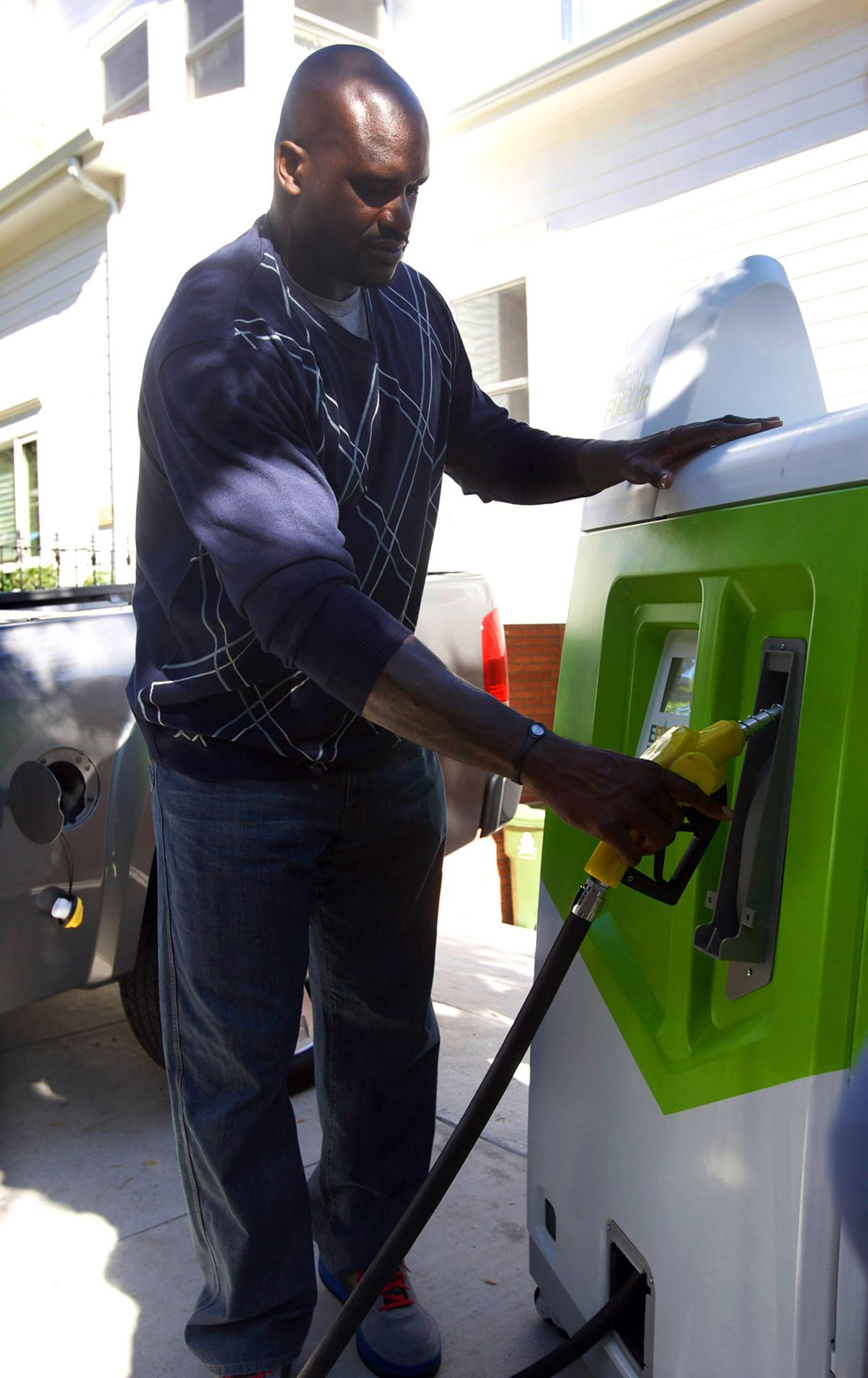Old beer, wine can be turned into fuel
Home-based MicroFueler makes ethanol from variety of wastes

It sounds too good to be true: A residential system that allows people to make fuel from old beer, leftover wine and other waste products and use it to run their vehicles.
That’s what inventors of the E-Fuel MicroFueler claim, and there’s support for the idea in government, industry and pop culture. MicroFueler buyers are eligible for a $5,000 tax credit. Former Los Angeles Laker Shaquille O’Neal is an investor in the system’s distributor.
The $10,000 E-Fuel MicroFueler consists of a 250-gallon tank for organic feedstock, such as waste wine and beer, and a still that converts it to 100 percent ethanol, or E-Fuel. The still doubles as a fuel pump, which works similarly to those at gas stations. The only waste product is distilled water.
“If we give everybody the ability to make their own fuel, you break the oil infrastructure,” said MicroFueler inventor Tom Quinn, an entrepreneur from California’s Silicon Valley who also developed the motion-control system for the Nintendo Wii gaming system, a version of which is used in his new microrefinery.
“Three years ago, I looked at where the world was going, and energy caught my eye,” said Quinn, chief executive of E-Fuel Corp. in Los Gatos, Calif. “As a world, we had no replacement fuel for gasoline, and that led me to alternative fuels such as ethanol.”
The problem with ethanol, Quinn said, was energy inefficiency – not only in the carbon cost of growing, harvesting and transporting the corn that was used to make it, but in the distillation process that turned it into usable fuel. Many environmentalists are critical of corn-based ethanol, saying it is an inefficient fuel that uses valuable cropland and leads to food-price increases.
“In the U.S. alone, more than 100 billion gallons of organic fuel is thrown out,” said Quinn, who reached out to ethanol scientist Floyd Butterfield to collaborate on a system that could make ethanol in a manner that was cost-effective and better for the environment.
Although Quinn’s MicroFueler is most effective with wastes high in alcohol content, ethanol “can be made out of any waste – lawn clippings, dairy products, old chemicals, cardboard, paper, bruised and discarded apples from the grocery store. It can be fermented and turned into fuel in minutes,” Quinn said.
So far, only one MicroFueler is up and running. It was installed in late June at the home of Chris Ursitti, CEO of the GreenHouse, the San Diego company that is distributing the units and supplying feedstock to those who install MicroFuelers at their homes.
“You just open up the hatch and pour in some waste, and it turns it into fuel for the car,” said Ursitti, who uses homemade ethanol to run his flex-fuel-converted Lexus hybrid SUV.
GreenHouse has contracts with Karl Strauss Brewing Co., Gordon Biersch Brewing Co. and Sunny Delight to convert 29,000 tons of their liquid waste using MicroFuelers. A tanker truck picks up the companies’ waste and delivers it to home-based MicroFuelers, which convert it to ethanol on site. MicroFueler owners are charged $2 a gallon once they pump out the fuel.
In addition to powering vehicles, the fuel could run a 7,000-watt “Gridbuster” home generator, which produces 23 kilowatt-hours of electricity a gallon, GreenHouse says.
Factoring in the $5,000 federal tax credit, an annual household fuel consumption of 2,080 gallons and a $2 charge per gallon, GreenHouse estimates the average consumer payback time is about two years.